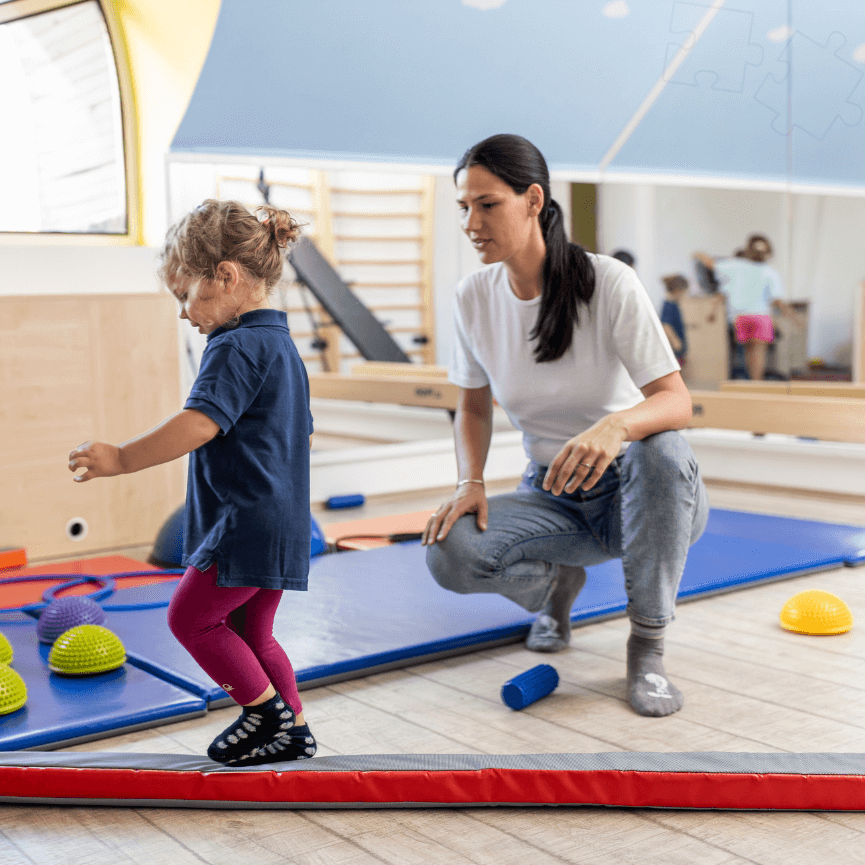
- Jun 12, 2025
- 10 Views
- 0 Comments
Occupational Therapy For Autism School Readiness
Starting school is a major life event. For neurotypical children, it’s exciting, maybe a little nerve-wracking. But for autistic children, it can be overwhelming, confusing, or even distressing. Think about it—new faces, routines, environments, sounds, and expectations. It's a sensory minefield. That’s why occupational therapy (OT) is so critical. It acts as a bridge, helping autistic children gain the skills, confidence, and tools needed to step into the classroom with readiness and resilience.
But occupational therapy isn't just about handwriting or motor skills—it’s a holistic approach to nurturing independence, sensory regulation, emotional resilience, and social communication. Let’s dive deeper into how OT plays a game-changing role in school readiness for autistic kids.
What Does School Readiness Really Mean?
Beyond Letters and Numbers
When we talk about school readiness, most people imagine a child who knows how to count, sing the alphabet, or hold a pencil. But it’s so much more than academics. School readiness includes:
- Emotional self-regulation
- Following routines and directions
- Sitting still and focusing
- Interacting with peers
- Communicating needs and feelings
- Coping with transitions
Autistic children may struggle in one or several of these areas—not because they are incapable, but because the systems aren't always designed for neurodiverse minds.
The Role of Occupational Therapy in Autism
What Is Occupational Therapy?
Occupational therapy focuses on enabling people—especially children—to perform the activities they need to do each day. For a child, “occupations” include playing, socializing, dressing, eating, and yes—learning in a classroom.
An occupational therapist helps autistic children build skills in areas like:
- Motor coordination
- Sensory processing
- Emotional regulation
- Task management
- Self-care routines
- Social play
It’s not about “fixing” autism. It’s about empowering the child to thrive on their terms.
Key Domains of School Readiness Supported by OT
1. Emotional Regulation
Many autistic children face heightened emotions, anxiety, or meltdowns, especially in overstimulating environments like schools. OT helps by:
- Teaching coping strategies
- Creating calm-down routines
- Introducing breathing and mindfulness tools
- Practicing transitions through play
With time, children become better able to self-soothe and adapt, even when the environment is unpredictable.
2. Social Interaction
Socializing doesn’t come naturally to all children, especially those on the spectrum. OT addresses this through:
- Role-playing real-life classroom scenarios
- Turn-taking and sharing games
- Facial expression and body language recognition
- Building confidence in initiating and sustaining play
The goal isn’t to change how the child socializes but to equip them with tools to connect in their own authentic way.
3. Communication
OTs work alongside speech therapists to help children:
- Understand spoken instructions
- Express their needs and feelings
- Use AAC tools like PECS, sign language, or communication boards
- Build non-verbal communication cues like pointing, eye contact, or gestures
These strategies ensure the child feels heard and understood—even if verbal language is limited.
4. Sensory Processing & Integration
Some children find fluorescent lights unbearable. Others may crave deep pressure or movement. OTs help decode these sensory needs and respond with:
- Sensory diets
- Weighted items or compression gear
- Fidget tools
- Noise-canceling headphones
- Swing therapy and vestibular activities
Helping a child regulate sensory input can dramatically improve attention, behavior, and comfort in school.
5. Fine and Gross Motor Skills
From holding a pencil to climbing stairs, children need a wide range of motor skills. OT builds:
- Fine motor skills: writing, buttoning, using scissors
- Gross motor skills: balance, posture, movement coordination
OT uses play-based methods—like puzzles, obstacle courses, crafts—to make this fun and effective.
Why Sensory Integration Matters for School Success
Many autistic children experience sensory processing disorder (SPD), making them hyper- or hypo-reactive to sensory input. Classrooms are full of noise, bright colors, textures, and social dynamics. Without the right strategies, this becomes overwhelming.
Occupational therapists perform sensory assessments and create personalized sensory profiles. They then develop plans that include:
- Movement breaks
- Quiet corners
- Chewelry or textured objects
- Visual supports to minimize verbal overload
This helps children feel safe, calm, and more in control, making learning easier.
Promoting Independence and Confidence
OT also builds independence through:
- Self-care routines: putting on shoes, zipping backpacks
- Toilet training
- Managing lunchboxes
- Following multi-step instructions
By practicing these skills in therapy, children become more autonomous and confident, reducing anxiety and promoting self-esteem.
Executive Functioning and Cognitive Readiness
Executive functioning refers to the brain's ability to plan, focus, remember instructions, and juggle multiple tasks. OT strengthens this through:
- Sequencing games
- Matching tasks
- Visual schedules
- Routine charts
- Problem-solving exercises
A child who can break tasks into steps is better equipped to follow lessons and participate in class activities.
Role of Parents and Caregivers in OT
Parents are key partners in school readiness. OTs often:
- Provide sensory tools and strategies for home
- Suggest routines for smoother mornings
- Teach calming techniques for home transitions
- Keep consistency between therapy goals and school expectations
When parents are involved, progress happens faster and more meaningfully.
Working Together: OT and Educators
Collaboration between therapists and teachers ensures that OT goals are supported in the classroom. This includes:
- Sharing strategies with teachers
- Conducting classroom visits
- Attending IEP (Individualized Education Program) meetings
- Training educators on sensory-friendly practices
A child doesn’t succeed in isolation. It takes a team approach that values and respects neurodiversity.
Tools and Strategies Used in OT for School Prep
Here are some popular OT tools:
- Weighted lap pads: for focus and calming
- Fidgets: help with self-regulation and attention
- Visual schedules: support routine adherence
- Therapy putty: builds hand strength
- Balance boards: improve coordination
- Slant boards: encourage better writing posture
The beauty of OT is how play and therapy blend seamlessly—kids learn while having fun.
Real-Life Case Studies
Case Study 1: The Silent Observer
6-year-old Aarav wouldn’t speak in class and had frequent meltdowns. After six months of OT focused on sensory integration, social play, and visual schedules, he began expressing his needs with picture cards and now actively participates in group games.
Case Study 2: Motor Milestones Unlocked
Ria, a 5-year-old with limited fine motor skills, couldn’t hold a pencil or open her lunchbox. With weekly OT, she practiced cutting, drawing, and zip-pulling. Three months later, she independently completed her first classroom worksheet.
Common Misconceptions About OT
“It’s Just Playing”
While OT often looks like play, every activity is targeted and therapeutic. It’s play with a purpose.
“OT Is Only for Physical Delays”
Wrong. OT addresses cognitive, sensory, emotional, and behavioral needs too.
“One Therapy Fits All”
Every autistic child is different. OT plans are highly individualized—what works for one might not work for another.
How to Know If Your Child Needs OT for School Readiness
Look out for signs such as:
- Trouble following routines
- Difficulty sitting still
- Sensory sensitivity
- Emotional outbursts
- Delayed fine motor or communication skills
An occupational therapist can perform a detailed evaluation and create a customized readiness plan.
School doesn’t have to be a battlefield for autistic children. With the right support from occupational therapy, they can walk through those school gates with confidence, curiosity, and calm. OT empowers kids to be seen, understood, and successful—not by changing who they are, but by meeting them exactly where they are.
If you're a parent, teacher, or advocate, remember: readiness isn’t about pushing a child to fit the system. It’s about shaping the system to embrace every child.



Comments - 0 comments till now